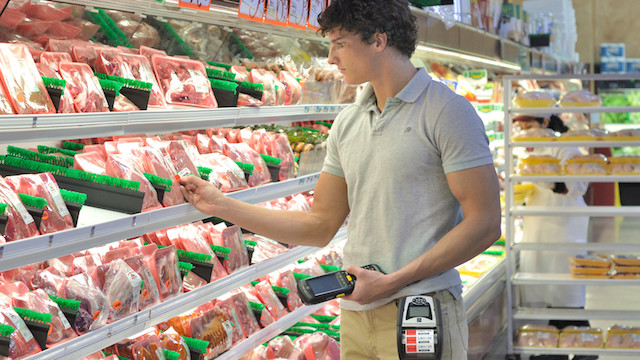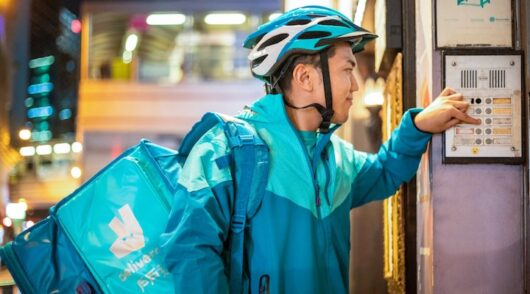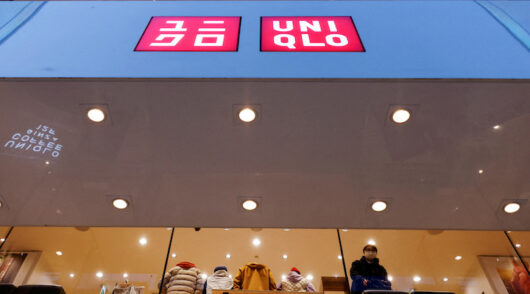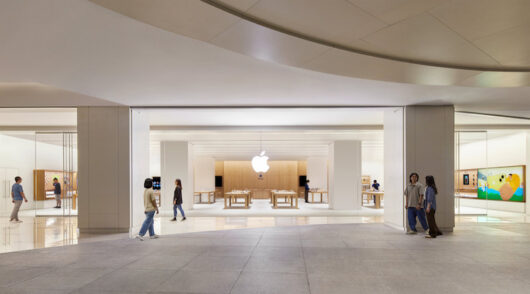Wayne Harper explains how retailers can ‘get more and do more’ with 2D barcodes.
The clean vertical lines of 1D barcodes are perhaps one of the most ubiquitous labels of all time – appearing on everything from your carton of milk to the box that your latest mobile phone comes in.
It is instantly recognisable to almost everyone and has served – for decades – as the wheels upon which enterprises have kept track of products in their supply chains.
As we live in an age of information, the need for more data has become inevitable. Organisations need to know more about its operations and processes in real-time, while consumers demand to know more about merchandize that they purchase.
Customer expectations are rising – today’s customer demands nothing less than an excellent customer experience. According to a Global Shopper Survey conducted by Zebra Technologies, 64 per cent of shoppers indicated a willingness to purchase more merchandise from stores with better customer service. Shoppers also agree that they have a better experience in stores where sales associates use the latest technology to assist customers. To continue fresh and genuine customer experiences, businesses need more data and business intelligence. Two-dimensional (2D) barcodes and imaging are the latest developments in the retail scene, helping to drive next-generation customer experience for businesses ready to up their game in customer engagement.
Barcodes 2.0: What are 2D barcodes?
2D imaging is making tremendous waves globally; indeed, a recent market study estimated that 2D imagers will account for nearly 52 per cent of the global industrial barcode scanner market by 2020. Whether it be a customer loyalty program, a warehouse streamlining processes to increase productivity, a factory tracing assets and products, or a hospital ensuring the right patient gets the right medication at the right time – 2D imagers are helping companies and organizations become more intelligent by capturing and managing more data than ever befor
With information encoded both vertically and horizontally, 2D barcodes allow significantly more data to be encoded than their 1D cousins. For example, Zebra’s PDF417 standard barcode can store up to 500 characters in a 25mm x 25mm square – or nearly twice the number of characters seen in this paragraph.
Beyond the denser data capabilities of 2D barcodes, scanning capabilities have also improved dramatically with the advent of 2D imagers. These new-generation scanners can read barcodes even if they are damaged, broken, or dirty. They also offer omni-directional scanning which allows data capture from more angles, enhance near-range scanning, and read multiple barcodes in a single trigger pull.
2D imagers enable various value-added functions, from mobile marketing and loyalty applications where it can read barcodes off the shiniest of mobile phone screens; to image capture; to optical character recognition, allowing companies to “Get More” information (or data) and then “Do More” business with the data captured while offering the customers the convenience of using their smartphones to present 2D barcodes. 2D imagers thus offer superior performance while enabling companies to reduce errors, increase asset visibility, and lessens losses in the entire value chain.
2D Imagers for retail
To survive in the modern competitive era, retailers need to meet and exceed customer expectations in terms of their respective shopping experience, so as to earn customer loyalty. Take for example Feneberg Lebensmittel, a regional supermarket chain in southern Germany, which recently overhauled its point of sale (POS) systems. With its old POS systems, staff had to manually hunt for barcodes on items and align them properly with scanners in order to process them. Damaged, poorly printed, or obscured barcodes required staff to manually input codes, as did coupons and customer loyalty cards, which considerably lengthened customer waiting times and queues. As we all know, the POS is the final stop in the customer’s journey through the store, and a good impression needs to be made to engender return visits.
To boost the customer experience, Feneberg deployed 2D imaging solutions from Zebra Technologies that offered a slew of capabilities such as a six-sided coverage zone with 100 per cent image process. This means that items no longer need to be perfectly aligned with the barcode scanner, saving much time and reducing frustration. The 2D imagers deployed provide excellent scanning performance and fast read-rates, while offering the ability to read both 1D and 2D barcodes – even those displayed on the screens of customers’ smartphones or on plastic loyalty cards. As a result, staff productivity has improved and shoppers enjoyed quick and efficient service.
Closer to home, Indonesian grocer SaveMax Super Grosir has implemented the use of 2D scanners, and as a result, saw significant productivity improvements at its checkout counters.
2D imagers not only speed up the checkout process but also increase customer satisfaction by enabling mobile loyalty applications, mobile coupons on customers’ smartphones. Customers can also recharge gift cards and pay with a quick scan of the code appearing on their mobile phones. Some 2D imagers also offer enhanced range and can scan barcodes from a greater distance, eliminating the need to handle a customer’s mobile device, and are very useful for scanning large and bulky items or those at the bottom of a cart.
The use of 2D imagers also allows retailers to quickly populate product return databases, reducing errors from manual entry and helping to identify serial returners. The scanning of barcodes on a customer’s driver’s license is an easy way to verify their identity, ensuring that sales of restricted items such as tobacco or liquor are not made to underage shoppers, and reducing retailer liability.
Last but not least, 2D imagers can use the information stored in 2D barcodes to quickly populate forms such as loyalty card applications, ensuring that lines are not held up while customers complete paper forms.
Get more, do more with 2D
While the 1D barcode continues to dominate and has become part of our everyday lives, 2D barcode provides real-time visibility to businesses that helps deliver consistent and seamless customer-centric experience, improve customer loyalty, and increase employee productivity. These are key elements in ensuring that a retail enterprise remains competitive, and, as a result, increases its bottom line. 2D imaging is a very simple and affordable way for retailers to update their businesses to making the leap towards improving customer experience.
* Wayne Harper is senior technical director with Zebra Technologies Asia Pacific.









